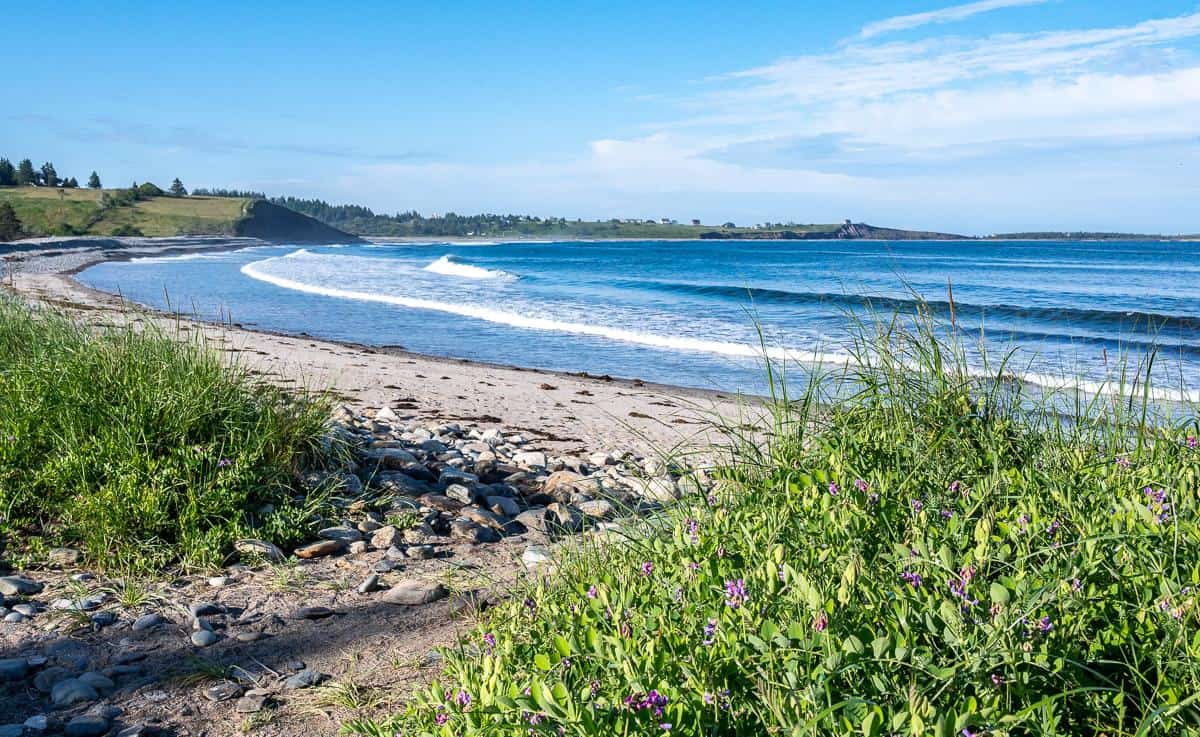Historic Downtown Los Angeles Walking Tour
10 min read
Table of Contents
Take a free guided or self-guided walking tour of historic downtown Los Angeles to learn about the city’s birthplace.
El Pueblo de Los Angeles Historical Monument marks the birthplace of Los Angeles, California. It’s a fun place to explore on a free historic downtown Los Angeles walking tour.
Editor’s Note: For more on historic Los Angeles, check out Oldest Los Angeles, newly released by author Mimi Slawoff from Reedy Press.
About El Pueblo de Los Angeles
Situated in the heart of Downtown L.A., El Pueblo de Los Angeles Historical Monument is probably best known for Olvera Street, an open-air Mexican marketplace. But there’s much more to El Pueblo. The 44-acre district comprises 27 buildings from the 19th and 20th centuries. These historic sites reflect the history and heritage of the early pioneers who established a pueblo in 1781. As more settlers arrived, the pueblo evolved into a thriving community, and the incorporation of Los Angeles as a city in 1850.
El Pueblo, designated a state historical park in 1953, is a City of Los Angeles department. Of the 27 historic buildings, 11 are restored and open as businesses. These include seven free museums. The best way to explore El Pueblo is on foot. If you start at the main entrance, the Plaza is the first thing you’ll see on your historic downtown Los Angeles walking tour.

Explore historic buildings and enjoy festivals in historic Downtown Los Angeles. Photo by Mimi Slawoff
Prices pulled from the Amazon Product Advertising API on:
Product prices and availability are accurate as of the date/time indicated and are subject to change. Any price and availability information displayed on [relevant Amazon Site(s), as applicable] at the time of purchase will apply to the purchase of this product.
The Plaza
Built in the 1820s as a gathering place for the growing community, the Plaza is still the hub of El Pueblo. It also serves as a monument to L.A.’s original 44 settlers. A plaque of each name is on the ground encircling the gazebo at the plaza’s center. If you visit on the weekend, you may catch a festival or performance. For example, the Plaza is especially festive during Cinco de Mayo, when El Pueblo comes alive with traditional Mexican music and dance performances.

The Plaza has been El Pueblo’s gathering place since it was built in the 1820s. Photo by Mimi Slawoff
Plaza Firehouse
From the Plaza, it’s just a few steps to the Plaza Firehouse, one of El Pueblo’s seven free museums. Plaza Firehouse, built in 1884, housed firefighting crews and their equipment until 1897. It has been used for various purposes after it closed down—as a saloon, Chinese vegetable market, and drugstore until the State of California purchased the facility in 1954. Today, the Plaza Firehouse contains firefighting equipment from the late 19th and early 20th centuries. These include helmets, historical photos, and firefighting equipment. Often, docents are on hand to share local history and fun facts.

The Plaza Firehouse contains firefighting photos and equipment from the 19th century. Photo by Mimi Slawoff
Pico House
Next to the Firehouse is the Pico House. It was L.A’.s first three-story building and luxury hotel. Pio Pico, the last governor of California under Mexican rule, built the large hotel between 1869 and 1870. At the time, it was dubbed “the finest hotel in Southern California.” And no wonder. The hotel had 80 bedrooms, 21 parlors, and bathrooms/water closets. The Pico House is not always open to the public. However, you can admire its impressive exterior.
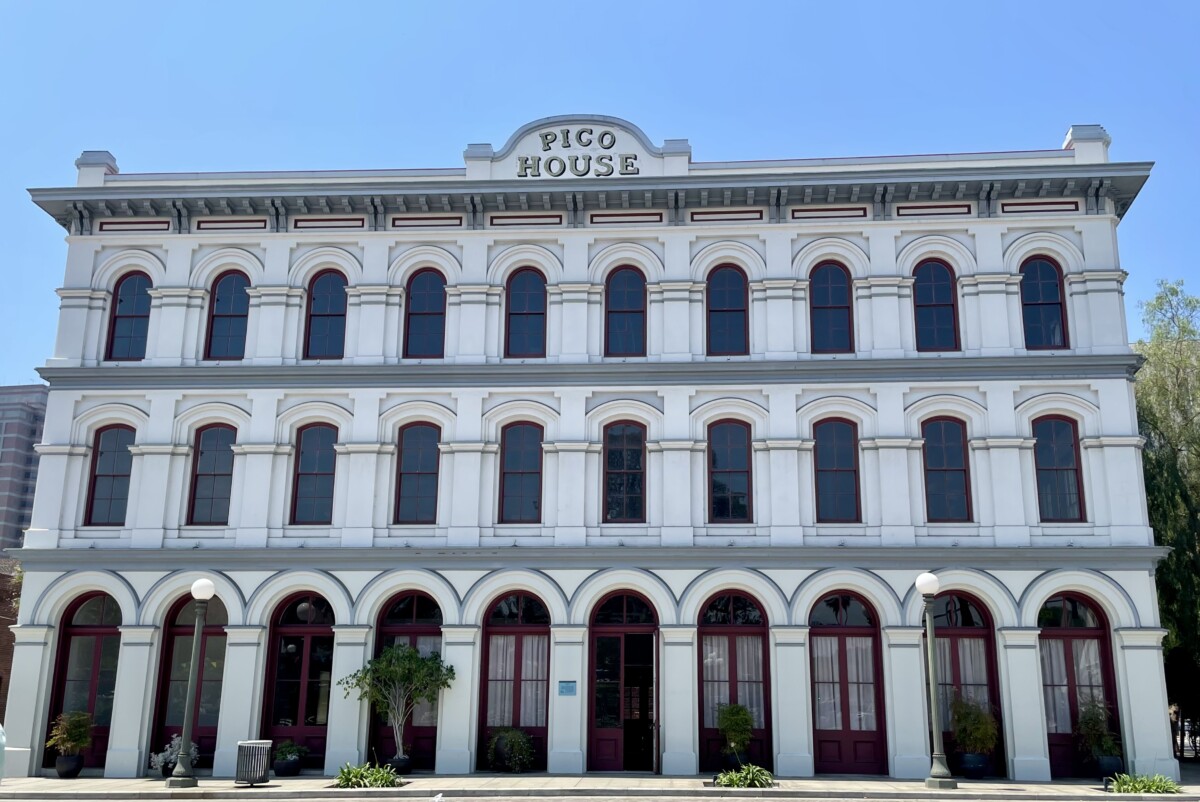
The Pico House was L.A.’s first three-story hotel. Photo by Mimi Slawoff
Merced Theatre
From the Pico House, the walking tour of historic downtown Los Angeles continues to the Merced Theatre, which has a fascinating history. Built in 1870, the Merced Theatre was the first building dedicated to theater arts in Los Angeles, known for its satirical presentations, fashionable burlesque, minstrel performances, and professional acting ensembles. But success was short-lived. After just five years, competition and a local smallpox outbreak led to its closure. But the theatre took on a new role.
Around 1897, the theater offered rental housing to gay men. Shortly after, the theater began hosting masked balls where LGBTQ individuals could cross-gender dress and hide their identities behind masks. This led to drag balls and helped establish cross-gender costuming as a valid social subculture and an expression of art.
Garnier Building
Walk around the corner to your next stop, the Garnier Building. It is open to the public during operating hours for the Chinese American Museum (CAM), situated inside this historic structure. But first, a bit about the historic Garnier building, constructed in 1890 by French settler and businessman Philippe Garnier.
Prices pulled from the Amazon Product Advertising API on:
Product prices and availability are accurate as of the date/time indicated and are subject to change. Any price and availability information displayed on [relevant Amazon Site(s), as applicable] at the time of purchase will apply to the purchase of this product.
For many years, the building was the hub of Chinese cultural life. It’s where the local Chinese would shop, attend temple, and send their kids to school. But beginning in 1933, the City of Los Angeles forced the Chinese community to move so it could build the Union Station Passenger Terminal and freeways systems. The buildings were demolished—except for the Garnier Building. It’s the last surviving structure of the original L.A. Chinatown.
The Chinese American Museum opened in 2003. The museum features exhibits, programs, and events that share the experiences and contributions of Chinese Americans in the US.

The historic Garnier building houses the Chinese American Museum. Photo courtesy of Chinese American Museum
La Iglesia de Nuestra Señora la Reina de Los Ángeles
Depending on the day you visit, there may be services and special events at this historic church. The church is also known as Our Lady Queen of Angels Catholic Church and La Placita. Built between 1818 and 1822, the Catholic church is the only building at El Pueblo still used for its original purpose. It also serves as an active parish for the Roman Catholic Archdiocese of Los Angeles.

Our Lady Queen of Angels Church is an active parish. Photo by Mimi Slawoff
América Tropical Interpretive Center
Next on your walking tour of historic downtown Los Angeles, cross the street to reach the América Tropical Interpretive Center. The focus here is on a once-controversial mural. You can view it from an outdoor platform accessible from the center. But first, take a few minutes to peruse the center’s exhibits to learn about the mural—and why it was controversial. The center also contains a replica of the mural.
In 1932, artist David Alfaro Siqueiros was commissioned by the La Plaza Art Center to paint an idealized tropical scene on a second-story exterior wall. Instead, he painted an 80- by 18-foot mural depicting Maya ruins, armed revolutionary soldiers, a crucified Indian figure, and an American eagle looming overhead.
When the mural was unveiled, it was immediately controversial. By 1938, the entire mural was whitewashed and remained under layers of white paint for the next 30 years. The Getty Conservation Institute collaborated with the City of Los Angeles to conserve América Tropical in 1988.
Sepulveda House
The América Tropical Interpretive Center is located inside the Eastlake Victorian-style Sepulveda House. It was built by Señora Eloisa Martinez de Sepulveda in 1887. The original structure included two commercial businesses and three residences. It’s currently a preserved museum.
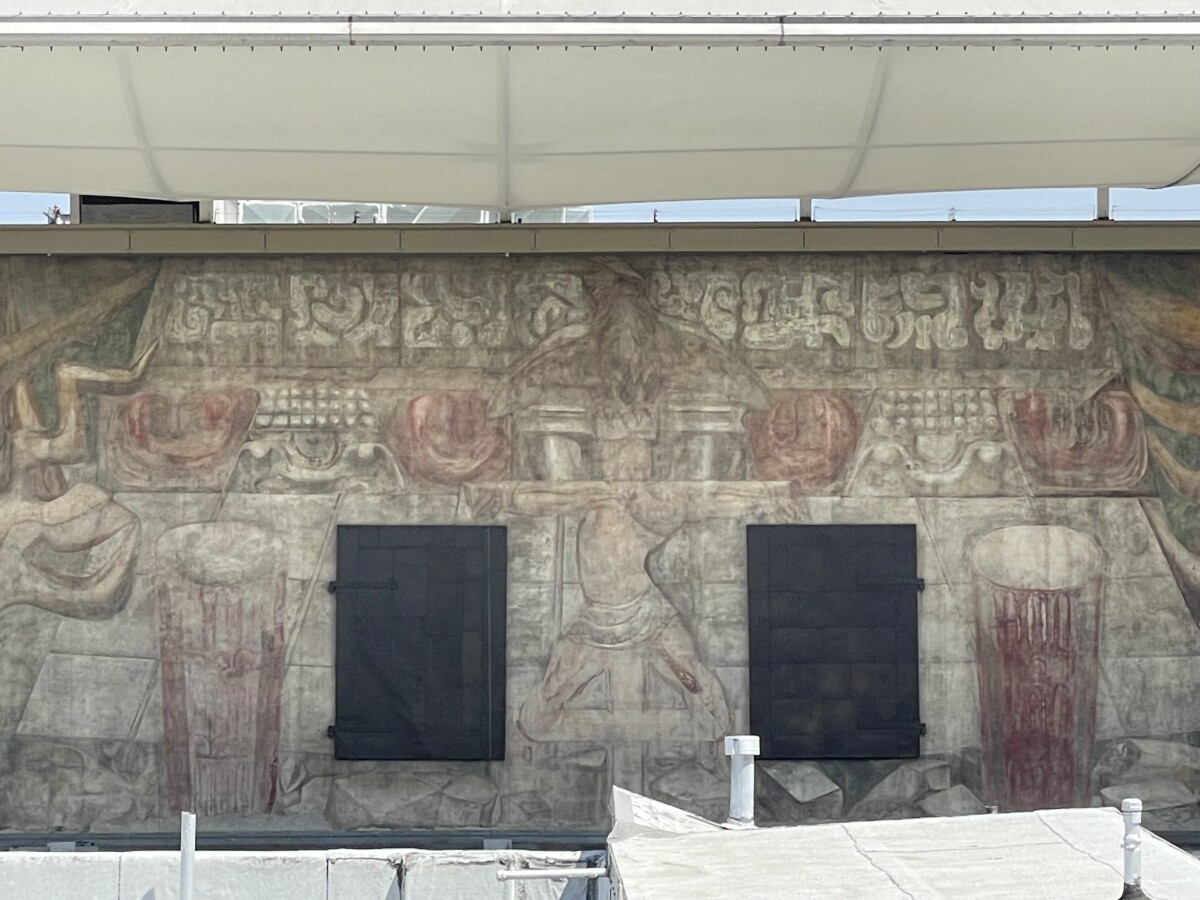
The faded América Tropical mural can be seen from a viewing platform. Photo by Mimi Slawoff
Italian American Museum of Los Angeles
Next door, walk up the stairs to the Italian American Museum of Los Angeles (IAMLA) to see El Pueblo’s original Italian Hall. The hall began in 1908 as a gathering place for the growing Italian community. The museum’s exhibits depict the stories of the first Italian settlers in 1827 and the role Italians played in L.A.’s development. Notice the Italian Hall’s original stage and wood floors, which have been well maintained. Friendly staff members are happy to share information about the hall and exhibits.
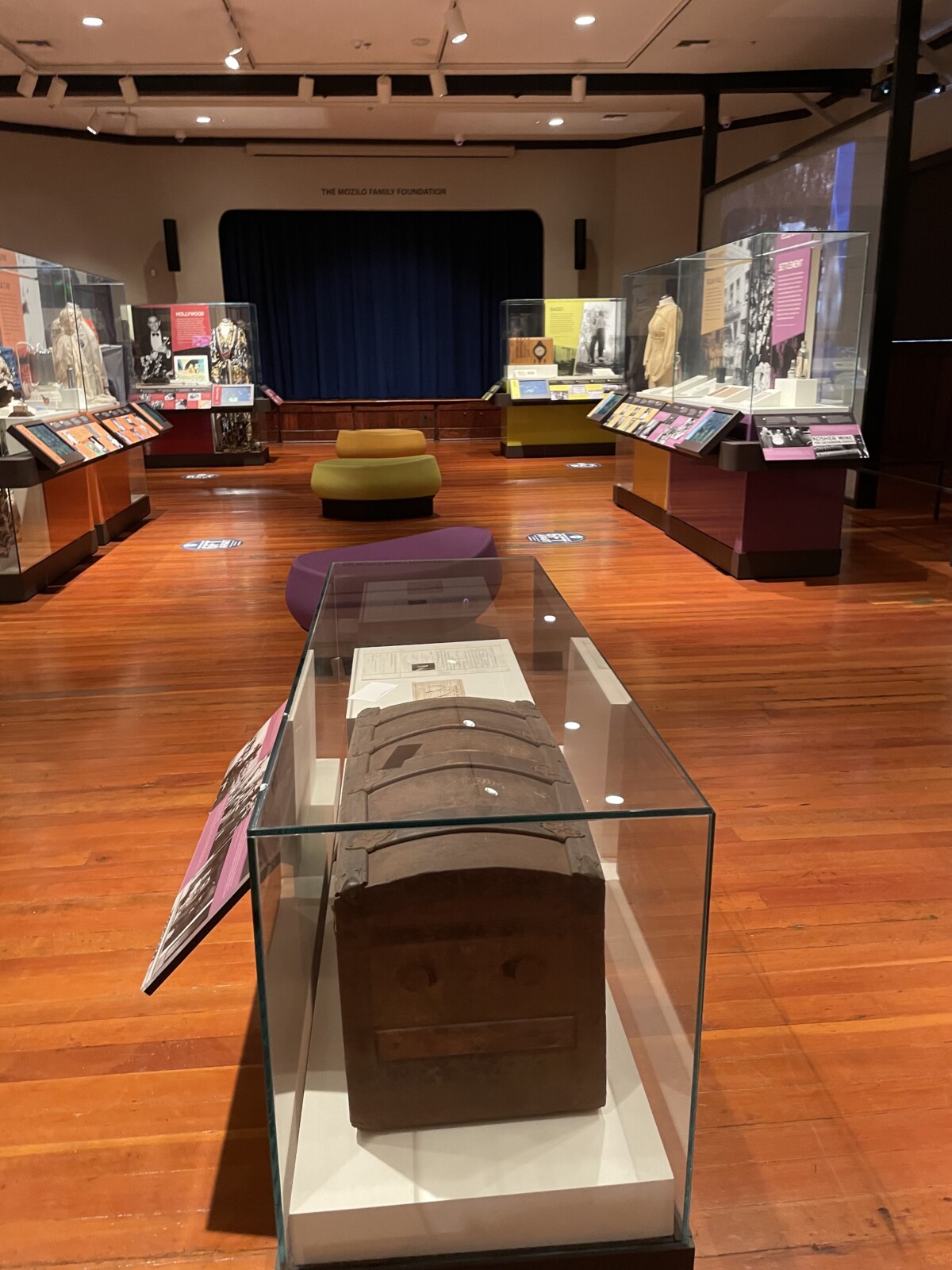
The Italian American Museum of Los Angeles houses L.A’.s original Italian Hall. Photo by Mimi Slawoff
Olvera Street
Although it’s a bit touristy, the lively, pedestrian-only Olvera Street is fun to visit and have lunch (and a margarita!). Merchant stalls overflow with imported goods and trinkets. Cafés and restaurants serve authentic tacos, taquitos, and other tasty Mexican dishes. Olvera Street is also home to several historic buildings. In addition, seasonal events include the Blessing of the Animals, Dia De Los Muertos, and Las Posadas.

Olvera Street is a popular Mexican marketplace. Photo by Mimi Slawoff
Pelanconi House
As you walk along Olvera Street, notice a brick building and a sign for the Pelanconi House. The brick house (the oldest in L.A.) was built between 1855-57 by Italian vintner Giuseppi Covaccichi. It had living quarters on the second floor and a wine cellar below. It’s believed that the wine was produced from locally grown grapes across the street at the historic Avila Adobe.
In 1924, the house was converted into a restaurant—Casa de La Golondrina. The Mexican restaurant opened its doors on April 30, 1930, for the opening-night party of Olvera Street. Recently, it seems to have changed ownership. Check if it might be reopened for business, but it’s worth walking past even if it remains closed.

The Pelanconi House is the oldest still-standing brick structure in L.A. Photo by Mimi Slawoff
Avila Adobe
Situated in the center of Olvera Street, Avila Adobe is L.A.’s oldest standing house. Built in 1818, the Avila Adobe, the house is open to the public for free self-guided tours. The rooms—a family room, kitchen, office, master bedroom, parlor, and children’s room—are furnished circa the late 1840s. Some of the furnishings are original.

Backyard view of the Avila Adobe. Photo by Mimi Slawoff
More Places to see on a Los Angeles Walking Tour
Although the 44-acre El Pueblo de Los Angeles Historical Monument, with its 27 buildings and museums, is the best place to explore historic downtown Los Angeles, other places downtown can help you explore the history and culture.
La Plaza de Cultura y Artes
The Mexican-American museum and cultural center features exhibits and special events.
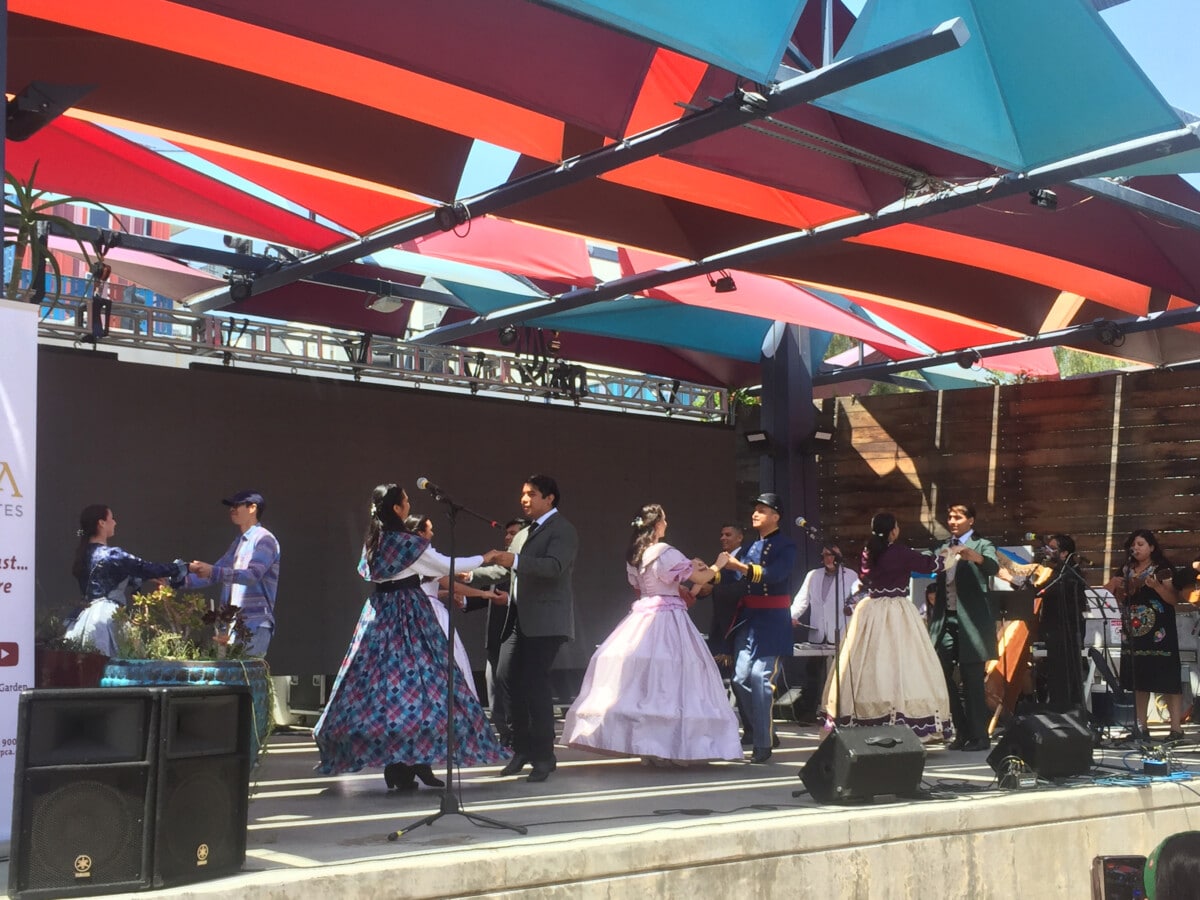
Cinco de Mayo performances are among the special events at the museum. Photo by Mimi Slawoff
Little Tokyo
Include Little Tokyo on your Historic Los Angeles Walking Tour if you have time. It’s a short walk to this Japanese American district, home to restaurants, shops, and the Japanese American Museum. One of my favorite places is Fugestu-Do, a family-run confectionery with house-made Manju and mochi. These traditional Japanese sweets come in several flavors.

Fugestu-Do is a historic confectionary in Little Tokyo. Photo by Mimi Slawoff
Getting Around Los Angeles
While it’s true you will probably need a car to get around L.A. County, the city does have a public transportation system. It’s handy for exploring Downtown L.A. Once you’re downtown, several walking tours include city highlights, like El Pueblo de Los Angeles Historical Monument.
Los Angeles Union Station
Located across the street from El Pueblo, Los Angeles Union Station is the city’s central transit hub. Built in 1939, Union Station offers train, regional bus, light rail, and subway services to get around L.A.
Insider Tip: If you decide to use the local railway service, consider buying a TAP card available in Union Station. You can save a few dollars on public transportation throughout Los Angeles County with the card.
Sometimes my friends and I take the Metrolink train to Union Station. From there, we walk across the street to El Pueblo for lunch. Or, we catch the Red Line to Pershing Square in downtown. We can avoid driving around L.A., which has many one-way streets and expensive parking lots.
Articles Related to Historic Downtown Los Angeles
Exploring Historic Downtown Los Angeles
Los Angeles is about so much more than the top tourist sites—although I encourage you to check out those not-to-miss places to explore. We encourage you to walk around and discover historic downtown Los Angeles. Check out Wander for more places to explore when visiting Southern California or throughout in The Golden State.

.





